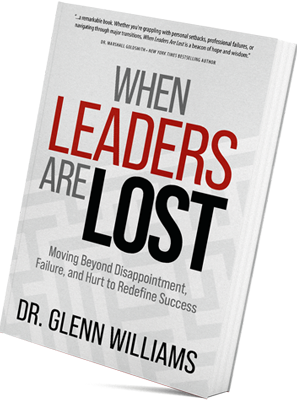The COVID-19 pandemic taught us a lot, not least how quickly a three- or five-year strategy can become redundant. We witnessed the unfortunate demise of thousands of businesses as long-term plans came to naught. However, a good number demonstrated tremendous resiliency principally by changing what they identified as their core indicators of success.
Their ability to change their view of success and adapt to a drastically unstable economic environment allowed them to continue and ultimately thrive. Renewed focus on innovation positioned many to adapt to a rapidly changing market. Eyewear company Zenni Optical was one such business. According to the U.S. Chamber of Commerce, “Pandemic innovations, like anti-fog and blue light lenses, help [the] retailer exceed sales projections by 45%.”
This brings me to the question: why are so many people and corporations scared or unwilling to adapt and innovate? What holds them back, and do those in leadership take responsibility for a culture that either tacitly or explicitly frowns on failure? If people don’t have permission to fail, they won’t develop new and better ways to do things.
How do businesses adapt and innovate effectively?
First things first, adaptation and innovation are different. Adaptation primarily involves your current processes, procedures, strategies, marketing, products, and services. It’s about bringing what you already have into a new alignment to suit the shift in the marketplace. It’s about using what you’ve already got in different ways – adapting.
Innovation takes you from the established into the new. It’s about walking off your current map and into a brave new future. Adaptation may or may not lead to innovation, but adaptation can only take you so far because it relies on existing structures. However, if you’re averse to it, you’re unlikely to embrace the risks involved with innovation.
"Innovate or die, and there’s no innovation if you operate out of fear of the new or untested."
- Robert Iger, The Ride of a Lifetime: Lessons Learned from 15 Years as CEO of the Walt Disney Company
Embracing failure as part of business success.
Innovation doesn’t just happen, and, yes, while adaptation is more readily accessible, both rely on courageous leadership. Leaders set the agenda for their company, and as a leader goes, so goes the company.
So, as leaders, how do we embrace failure as a part of innovation? Is there a limit to it, and when do we call time on an idea and move on?
Innovation that includes the freedom to fail only happens when there’s alignment between personal and corporate cultural values. If company values don’t allow people to experiment and develop solutions without fear of reprimand or negative repercussions, they won’t. It’s as simple as that.
Is perfectionism killing your company?
Perfectionism is the ultimate innovation killer. Dressed up as a culture of excellence, it discourages people from dreaming and doing, with the pressure to “get it right” the first time inhibiting innovation and invention.
The antidote is to create a culture that encourages “giving it a go.” To celebrate regularly new ideas, and yes, embrace failure as part of the process. I’ll say it again—normalise failure. Understand that failure is a necessary stepping stone to innovation and invention. For too long, failure has kept people from ideas that would save their companies and launch them into the stratosphere. And when did we decide that we had to get it right the first time?
Business leaders hold the keys to adaptation and innovation. I think we can take a leaf out of Thomas Edison’s book, who, when questioned about his numerous failures in the process of invention, reframed the premise, “I have not failed 10,000 times—I’ve successfully found 10,000 ways that will not work.”
Even a cursory glance tells us that Kodak lost sight of at least two guiding principles. They didn’t focus on the customer, missing the opportunity to mass-produce digital cameras before anyone else.
The bottom line
What business needs is courageous leadership.
The future belongs to those who can read the market and adapt and innovate accordingly. So, what’s the culture of your company? Do you value creativity and innovation? If so, how do you communicate your values and do your people come to you with ideas and solutions?
Remember, find ways to provide a safe environment for others to step up.
I recently released the book, When Leaders Are Lost, where I share how my own personal experience of failure and disappointment got in the way of achieving success. Get your copy, and find out why business leaders are talking about it.
– Dr. Marshall Goldsmith is the Thinkers50 #1 Executive Coach and New York Times bestselling author of The Earned Life, Triggers, and What Got You Here Won’t Get You There






